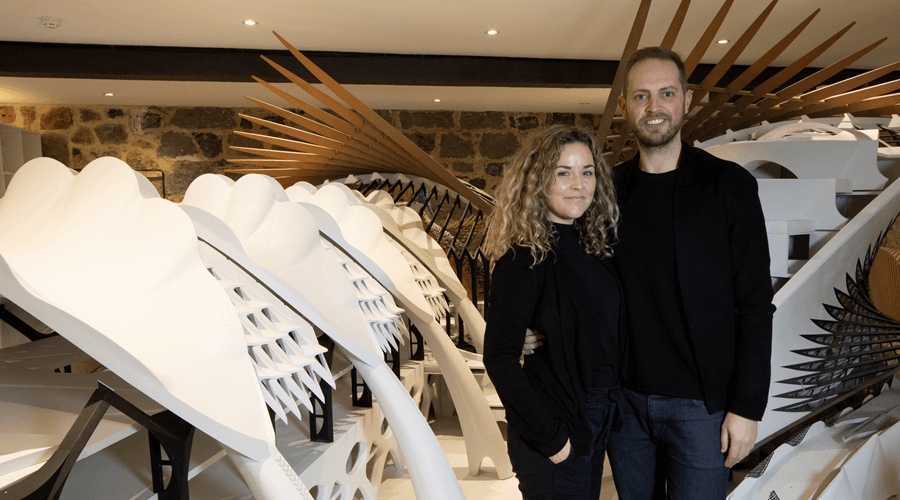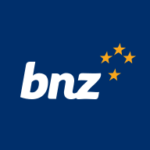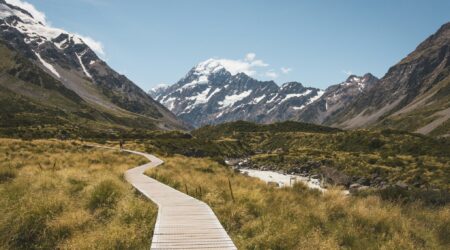Silver Linings: Architecture Van Brandenburg
23 Apr 2021
Read about how BNZ customer Architecture Van Brandenburg survived and thrived in their story originally published in the Silver Linings book. This has been republished with permission from Nanogirl Labs, written by David Downs and Joe Davis.
Architecture Van Brandenburg (AVB) is a cutting-edge architecture and design company with studios in Dunedin and Queenstown. With the construction of the AVB-designed 120,000m2 corporate campus for Chinese fashion giant Marisfrolg well underway in Shenzhen, prior to the emergence of Covid in New Zealand architect Damien Van Brandenburg had been spending half of his time in China supervising the project. Now unable to travel with lockdown, AVB had to adapt their approach to the project; at the same time, back home in Dunedin, they went to work in support of the local Covid response.
Over their 14-year history, AVB have been using advanced design and modelling techniques to create incredible forms. For the last few years, their near-exclusive focus has been on the Marisfrolg headquarters, a massive undertaking incorporating a design studio, offices, a hotel, spas and flagship stores all tied together within the campus. Lockdown provided Damien with a welcome break from his three weeks on, three weeks off schedule in Shenzhen. ‘This is the first time in 13 years I think I’ve stayed in one place for more than a month or two!’ says Damien. And his immediate concern was what was going on in his home patch. ‘The first focus was my team. The very first thing I did was send out an email saying, “take this time, get your family sorted and safe, and we’ll pick up from there.” I needed to let them know that we were there for them — that we’d take care of them, and that their role was to take care of their families.’ With the AVB team safely locked down in their homes, Damien and Ash — Damien’s wife, a product designer — began thinking about ways they could contribute to the Covid-19 response in their community. ‘Our office was closed up, but we knew we had all these tools in there — 3D printers, laser cutters, all this machinery and material. At that time we knew it was pretty dire for firstresponders in terms of the PPE they had available. We thought: “Why don’t we see if we can contribute by making 3D printed visors for the firstresponders?” So we set out with a goal of making enough visors for the GPs in Dunedin — we felt that would be a contribution.’ They were granted an exemption from lockdown, allowing them to enter their offices to produce the visors, and to transport them to those in need. As soon as people heard what was on offer, the requests began to pour in. ‘We got a lot of phone calls asking for the visors, and started producing more and more.
Within a week, we were producing them for all of Otago, and within two weeks for the whole of the South Island!’ Ultimately, their efforts saw thousands of protective visors manufactured for healthworkers across the South Island, distributed to everywhere from Bluff to Nelson — GPs, dentists, firstresponders, healthworkers — the team made sure a visor made it to anyone who needed one. The impact of their work didn’t stop there. The Dunedindesigned visor has since spread around the world! ‘Some of our team — also product designers — came on board, and we partnered up with other product designers in town here. Working on video calls and in shared documents, we collaborated to evolve and improve our visor. In the end we released a design online — the KiwiShield — which can be downloaded and laser-cut by anyone with the tools.’ The design has been picked up and manufactured to support healthworkers in Mexico, Spain, Sweden and The Netherlands. In Mexico alone, some 49 hospitals are using the KiwiShield as part of their PPE. The documentation has been translated into Italian, French and Mandarin, and is now freely available online for anyone to use.

‘Pretty soon, though, we had to get back to work,’ says Damien. China — the location of AVB’s major project — was emerging from lockdown just as New Zealand started to enter Level 4. ‘People there had been through lockdown, and while they were amazingly understanding of what we were going through, they were naturally keen to get back to it.’ Unable to travel, the team needed to find alternative ways to engage in the regular design and decisionmaking meetings happening on-site in Shenzhen. A gimbal-mounted 360-degree camera in China, and a virtual-reality headset in Dunedin provided a solution. ‘I can attend meetings and go on site tours from my office here. It’s very immersive: recently I was part of a (virtual) site tour, walking through the building, and I ducked down to avoid hitting my head on a beam! Even the weather — it’ll be raining in Shenzhen during a meeting, and when I take the headset off I’m surprised that it’s blue and sunny outside. So anyway, we’ve been able to carry on,’ says Damien.
The level of detail able to be considered remotely with the support of technology is remarkable, right down to guiding the placement of individual pieces of material within the structure. ‘Our material ethos is that we look to use recycled materials as much as possible. We’ve gathered materials from around China — discarded ceramics, marble offcuts. We create compositions of how we want these materials to be aesthetically arranged within the building. ‘We have details of the materials
available on-site sent to us. The shapes and colours of these offcuts depend on what the plant was cutting at the time. We have 3D models of the structure here in Dunedin. We’ll hand-paint those or apply the materials to the model, then we 3D-scan the model, and those scans are sent to China. The team on-site in Shenzhen then have a digital copy of the material study we’ve done — they can look at it on an iPad, and use that to guide their work within the building.’ Damien sees the new approach, supported by technology, remaining a core part of the practice beyond the constraints of the Covid response, reducing the amount of time he and his team will need to spend travelling.
There were silver linings for the AVB team closer to home, too. As the initial lockdown in New Zealand eased to Level 3, the company asked Moiety, one of Dunedin’s best restaurants, to package and deliver a beautiful meal to their team members’ homes: a way of marking the end of lockdown and celebrating the start of the next chapter. ‘While we were all working from home, one of our very close colleagues — part of our team here for 13 years — was inspired. He was working on animation and design, and that means a lot of time watching the computer render his work: this wheel spinning on the screen. He was inspired, and he started whittling a ring. Over that meal at the end of lockdown, he proposed to his partner with a beautiful wooden ring he’d whittled himself — they’re now engaged!
‘Silver Linings’ is available at all good booksellers.
Any views expressed in this article are the personal views of David Downs and Joe Davis and based on the views and experiences of the business owner. They do not necessarily represent the views of BNZ, or its related entities.
The information in this article is provided for general purposes only, and is a summary based on selective information which may not be complete for your purpose.
Images supplied by Architecture Van Brandenburg.




